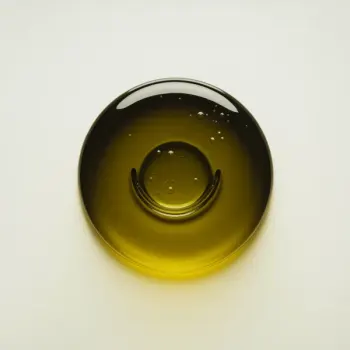Mayonnaise is a creamy condiment made from oil, egg yolk, and acid, while olive oil is a liquid fat from olives, used for frying, drizzling, or as a dressing. They differ in texture, flavor, and culinary uses.

Mayonnaise is a thick, creamy dressing typically made from oil, egg yolk, and an acid, usually vinegar or lemon juice. It is an emulsion where oil is blended into a base of egg yolks and acid to create a stable, creamy condiment.

Olive oil is a liquid fat obtained from olives, a traditional tree crop of the Mediterranean Basin. The oil is produced by pressing whole olives and extracting the oil. It's used in cooking, whether for frying, drizzling, or as a dressing, and is celebrated for its flavor and health benefits.
The primary difference lies in their composition; mayonnaise is an emulsion that includes egg yolk and acid, while olive oil is a pure fat extracted from olives. Mayonnaise has a creamy texture and a tangy flavor, while olive oil is more fluid and has a taste that ranges from buttery to peppery. Their culinary uses also vary significantly due to these differences.

Your ultimate Recipe Box, Meal Planner, and Cooking Class all in one
Ideal for creamy dressings, mayonnaise lends a smooth texture to salads like coleslaw or potato salad. It acts as a binder for other ingredients and adds richness. Olive oil is perfect for vinaigrettes and lighter dressings. It pairs well with acidic components like vinegar or lemon juice, enhancing leafy greens or Mediterranean-style salads.
Mayonnaise, when used in marinades, helps tenderize meat and keeps it moist during cooking. It's great for grilled chicken or fish, where it can also form a flavorful crust. Olive oil serves as a traditional base for many marinades, imparting flavor while helping other seasoning ingredients adhere to the meat or vegetables.
Mayonnaise can be used in baking moist cakes and bread due to its rich oil and egg content. It's a surprising but effective ingredient in chocolate cakes, for example. Olive oil is a healthier fat alternative in baking, providing moisture and a distinct flavor. It's commonly used in Mediterranean-style bread and cakes.
Mayonnaise is high in calories and fat, and it contains egg yolk which provides additional nutrients. Olive oil is rich in monounsaturated fats and has health benefits associated with its antioxidants.
| Nutrient | Olive Oil ( per Tablespoon ) | Mayonnaise ( per Tablespoon ) |
|---|---|---|
| Fat | 13.5g | 10.3g |
| Sodium | 0.27mg | 105mg |
| Calcium | 0mg | 1mg |
| Protein | 0g | 0.13g |
| Calories | 119 | 94 |
| Carbohydrates | 0g | 0.1g |
Yes, olive oil can be used instead of mayonnaise for a lighter, healthier dressing, though the texture and taste will differ.
Olive oil, particularly extra virgin, has a lower smoke point than mayonnaise and can become bitter when overheated. However, refined olive oil can be used for cooking at moderately high temperatures.
Yes, mayonnaise can be combined with vinegar or lemon juice to make a creamy vinaigrette.
Generally, olive oil is considered healthier due to its monounsaturated fats and lack of additives found in some mayonnaise.
Yes, you can make a version of mayonnaise called 'aioli' by emulsifying olive oil into egg yolks and acid like lemon juice or vinegar.